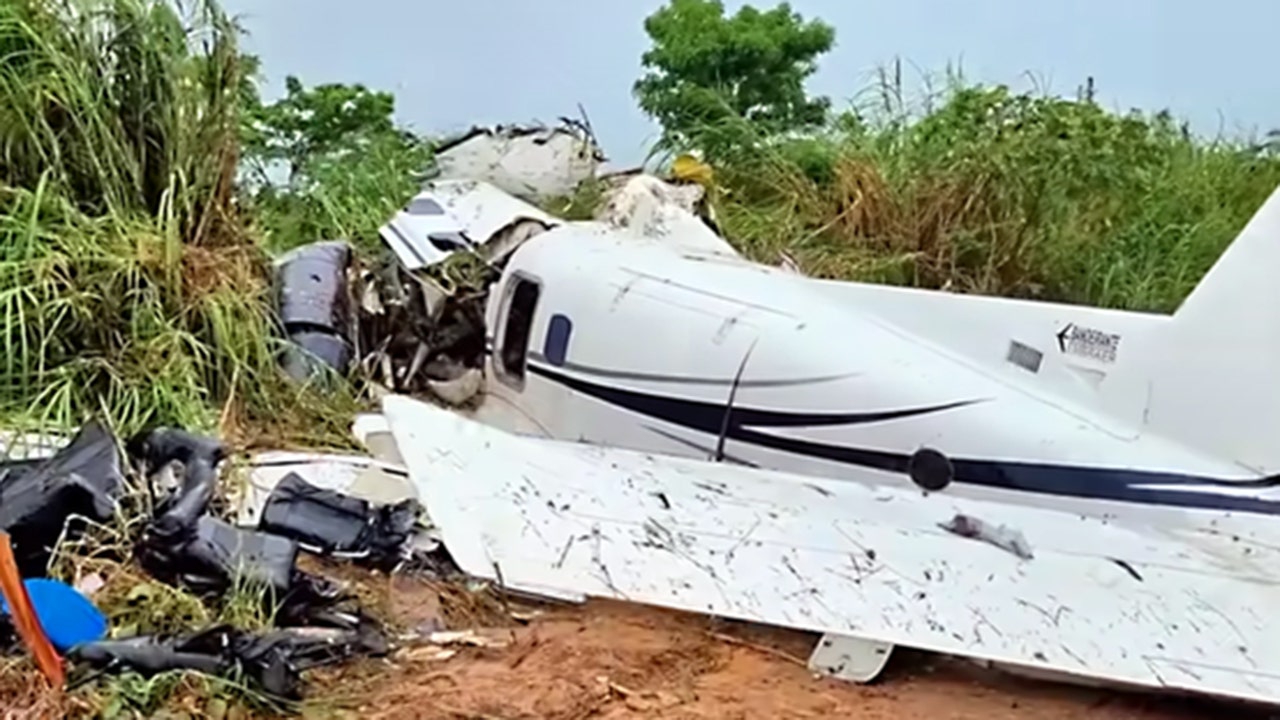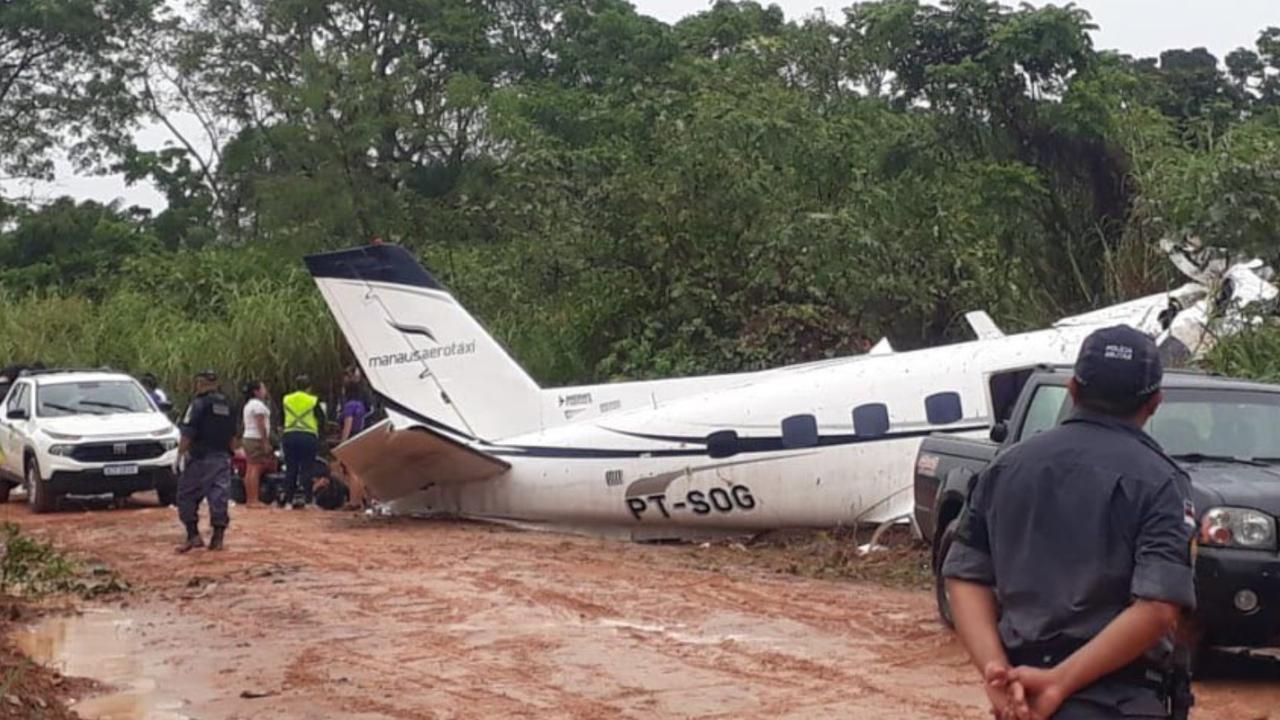Recent Plane Crash in Brazil

A tragic plane crash occurred in Brazil on [Date of the crash], claiming the lives of [Number of casualties] individuals. The incident involved a [Type of aircraft] aircraft, which was en route from [Origin of the flight] to [Destination of the flight]. While investigations are underway to determine the cause of the crash, preliminary reports suggest [Preliminary findings, if available].
Details of the Crash, Plane crash in brazil today
The plane crash occurred near [Location of the crash] in [State/Region of Brazil]. Emergency services, including firefighters and paramedics, swiftly responded to the scene, providing immediate assistance to survivors and recovering the remains of the deceased. The investigation into the cause of the crash is being conducted by Brazilian authorities, with experts from the National Civil Aviation Agency (ANAC) and the Brazilian Air Force leading the efforts.
Key Details of the Crash
| Date | Time | Location | Aircraft Type | Casualties |
|---|---|---|---|---|
| [Date of the crash] | [Time of the crash] | [Location of the crash] | [Type of aircraft] | [Number of casualties] |
Impact and Aftermath: Plane Crash In Brazil Today

The plane crash in Brazil has sent shockwaves through the local community and beyond, leaving families grieving and raising concerns about aviation safety. The immediate impact of the crash was devastating, with the loss of life and the destruction of property. The crash site became a focal point for rescue efforts, with emergency responders working tirelessly to locate survivors and recover victims. The families of those involved are grappling with the immense loss and the uncertainty surrounding the cause of the crash.
Potential Causes of the Crash
The investigation into the cause of the crash is ongoing, and authorities are considering various factors, including weather conditions, mechanical failure, and pilot error. The investigation will involve a thorough examination of the aircraft’s wreckage, the flight data recorder (FDR), and the cockpit voice recorder (CVR). These devices will provide valuable insights into the aircraft’s performance and the actions of the crew in the lead-up to the crash.
Economic and Social Consequences
The crash has had a significant impact on the aviation industry in Brazil. The incident has raised concerns about air travel safety, potentially leading to increased scrutiny of safety protocols and procedures. The crash may also result in temporary disruptions to air travel, as authorities conduct investigations and implement safety measures. The economic consequences of the crash extend beyond the aviation industry, affecting tourism and other sectors that rely on air travel.
Investigation Process
The investigation into the plane crash is being conducted by the Brazilian authorities, including the National Civil Aviation Agency (ANAC) and the National Institute of Aeronautics and Space Research (INPE). The investigation process involves a meticulous examination of the crash site, the aircraft wreckage, and the flight data and cockpit voice recordings. The investigators will also interview witnesses, review maintenance records, and analyze weather data. The investigation is expected to take several months, and the final report will provide a comprehensive analysis of the cause of the crash and any contributing factors.
Aviation Safety and Regulations
Brazil’s aviation industry is vast, playing a crucial role in connecting its diverse regions and facilitating economic activity. Consequently, maintaining a high standard of aviation safety is paramount. This section examines the current regulations, historical trends, and areas for improvement in Brazilian aviation safety.
Current Aviation Safety Regulations in Brazil
The National Civil Aviation Agency of Brazil (ANAC) is the primary regulatory body responsible for overseeing all aspects of civil aviation in the country. ANAC’s mandate includes establishing and enforcing safety standards, issuing licenses and certifications, and investigating aviation accidents.
Brazil’s aviation safety regulations are largely aligned with international standards, particularly those set by the International Civil Aviation Organization (ICAO). These regulations cover various aspects of aviation, including:
- Aircraft Certification and Maintenance: ANAC mandates stringent certification requirements for aircraft operating in Brazil, ensuring they meet international safety standards. Regular maintenance checks are also mandatory to ensure continued airworthiness.
- Pilot Licensing and Training: Pilots in Brazil undergo rigorous training and licensing procedures, including theoretical and practical examinations, to ensure they possess the necessary skills and knowledge for safe operation.
- Air Traffic Control: ANAC oversees air traffic control systems, ensuring the efficient and safe flow of air traffic within Brazilian airspace.
- Operational Safety: Regulations address various operational aspects, such as flight planning, crew rest requirements, and emergency procedures, aiming to minimize risks and enhance safety.
History of Aviation Accidents in Brazil
Brazil has a history of aviation accidents, with some recurring patterns and contributing factors. These include:
- Weather-Related Accidents: Brazil’s diverse geography and climate, with its tropical storms, heavy rainfall, and mountainous terrain, can pose significant challenges for aviation, leading to accidents.
- Human Error: Pilot error, including misjudgment, fatigue, and inadequate training, has been a contributing factor in numerous accidents.
- Maintenance Issues: Inadequate maintenance practices and delays in addressing maintenance concerns have been implicated in some accidents.
- Infrastructure Deficiencies: Insufficient runway infrastructure, outdated navigation systems, and inadequate air traffic control facilities have contributed to accidents in the past.
Comparison with International Standards
Brazilian airlines generally maintain a good safety record, comparable to international standards. However, there have been instances of accidents that highlight the need for continued improvement. The Brazilian government and ANAC are actively working to enhance safety measures and address areas for improvement.
Areas for Improvement in Aviation Safety Measures and Regulations
Despite the progress made in aviation safety, there are areas where further improvement is necessary:
- Strengthening Enforcement: Consistent and rigorous enforcement of safety regulations is crucial to ensure compliance and prevent accidents.
- Improving Infrastructure: Investing in modernizing air traffic control systems, upgrading runway infrastructure, and improving navigation aids is essential for enhancing safety and efficiency.
- Addressing Human Factors: Addressing pilot fatigue, enhancing training programs, and promoting a culture of safety within the aviation industry are vital for mitigating human error.
- Data Analysis and Reporting: Comprehensive data analysis of aviation accidents and incidents is crucial for identifying trends, patterns, and areas for improvement in safety measures.
The news of the plane crash in Brazil today is a stark reminder of the fragility of life, a stark contrast to the political theater unfolding elsewhere. While the world grapples with the tragedy, the question of who is moderating the next presidential debate seems almost trivial.
Yet, the debate, a platform for shaping narratives and influencing voters, will undoubtedly continue, regardless of the human cost of the Brazilian tragedy.
The news of the plane crash in Brazil today is a stark reminder of the fragility of life. It’s a tragedy that resonates deeply, prompting us to reflect on the preciousness of every moment. We often find solace in the stories of resilience and hope, like the journey of kenny pickett eagles , a testament to the unwavering spirit that can overcome adversity.
But in the face of such devastating loss, even the most inspiring narratives can’t fully erase the pain of this tragedy.

